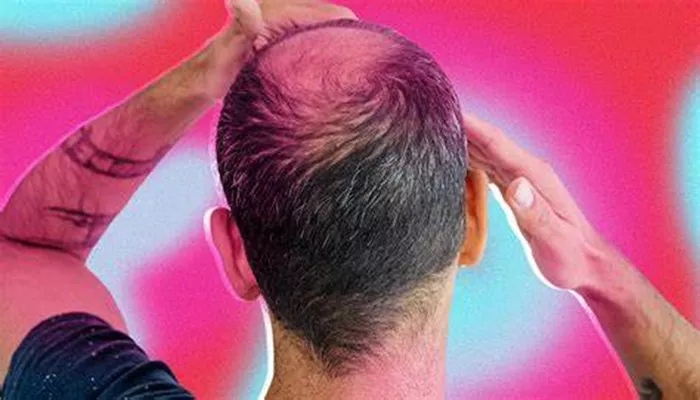Thinning hair is a common concern that affects millions of people worldwide, regardless of age or gender. While some degree of hair shedding is normal—losing around 50 to 100 hairs per day is typical—noticeable thinning can be distressing and may signal an underlying issue. Recognizing the early signs of hair thinning is crucial for seeking timely treatment and preventing further loss.
The Early Signs of Thinning Hair
Thinning hair doesn’t always happen overnight. In many cases, the process is gradual, making it easy to overlook the initial changes. One of the first signs people notice is a widening part. When hair begins to thin, the scalp becomes more visible along the natural part line, especially under bright lighting. Another early indicator is increased hair shedding. Finding more strands than usual on your pillow, in the shower drain, or on your hairbrush can be a red flag.
Some individuals may also observe that their ponytail feels thinner or that their hair lacks its usual volume. If you’ve always had thick hair but suddenly notice that your hairstyles don’t hold as well or that your hair feels finer, this could be a sign of thinning. Additionally, men and women often experience thinning differently—men typically see a receding hairline or bald spots at the crown, while women tend to notice diffuse thinning across the top of the scalp.
Visible Changes in Hair Density and Texture
As thinning progresses, the changes become more apparent. The hair may start to look wispy, especially around the temples and crown. In some cases, the hairline recedes, creating an “M” shape in men or a broader forehead in women. The texture of the hair may also change—once-coarse strands can become finer and more fragile, breaking easily when brushed or styled.
Another noticeable sign is the scalp becoming more visible under certain lighting conditions. For instance, overhead lighting in bathrooms or direct sunlight can make thinning areas stand out. People with darker hair may notice their scalp more prominently because of the contrast between hair color and skin tone. Those with lighter hair might not see the scalp as easily, but they may still detect a reduction in overall hair density.
Thinning Hair vs. Bald Patches
It’s important to distinguish between general thinning and distinct bald patches. Thinning hair usually involves a gradual reduction in hair density across large areas, whereas bald patches are more localized and often linked to conditions like alopecia areata. With thinning hair, the hair loss is widespread but not completely absent, whereas bald spots involve smooth, hairless areas on the scalp.
In male-pattern baldness (androgenetic alopecia), hair loss typically follows a predictable pattern—starting at the temples or crown and progressing over time. Female-pattern hair loss, on the other hand, usually presents as an overall thinning with preservation of the frontal hairline. Understanding these differences can help determine the underlying cause and appropriate treatment options.
How Styling and Hair Care Can Reveal Thinning
Certain hairstyles and hair care habits can make thinning more noticeable. Tight ponytails, braids, or buns can stress the hair follicles, leading to traction alopecia—a form of hair loss caused by constant pulling. Overuse of heat styling tools, harsh chemical treatments, and excessive brushing can also contribute to breakage, making hair appear thinner.
People with thinning hair often find that their usual styling techniques no longer work. For example, hair may not hold curls as well, or updos may look sparse. Some individuals resort to volumizing products or root-lifting sprays to create the illusion of thicker hair, but these are temporary fixes. Switching to gentler hairstyles, avoiding excessive heat, and using nourishing hair products can help minimize further damage.
When to Seek Professional Help
While some degree of hair thinning is normal with aging, sudden or excessive hair loss should prompt a visit to a dermatologist or trichologist. Conditions like thyroid disorders, hormonal imbalances, nutritional deficiencies, and autoimmune diseases can contribute to hair thinning. A healthcare provider can perform blood tests, scalp biopsies, or trichoscopy (a specialized hair and scalp examination) to diagnose the underlying cause.
Early intervention often yields the best results. Treatments such as minoxidil (Rogaine), finasteride (for men), low-level laser therapy, and platelet-rich plasma (PRP) injections can help slow or even reverse hair loss in some cases. Additionally, addressing nutritional deficiencies (like low iron or vitamin D) and managing stress can improve hair health.
Conclusion
Thinning hair can manifest in various ways—from a widening part and increased shedding to changes in texture and visible scalp exposure. Recognizing these signs early allows for prompt treatment and better outcomes. While genetics play a significant role in hair loss, lifestyle factors, medical conditions, and hair care practices also contribute. If you notice persistent thinning, consulting a healthcare professional can help identify the cause and guide you toward effective solutions. Remember, hair thinning is a common issue, and with the right approach, many people can restore their hair’s health and confidence.
Related Topics:
- 7 Best Mild Shampoos for Hair Fall
- What Is Ultra Refined Follicular Unit Hair Transplantation?
- 11 Effective Ways to Stop Side Hair Fall


